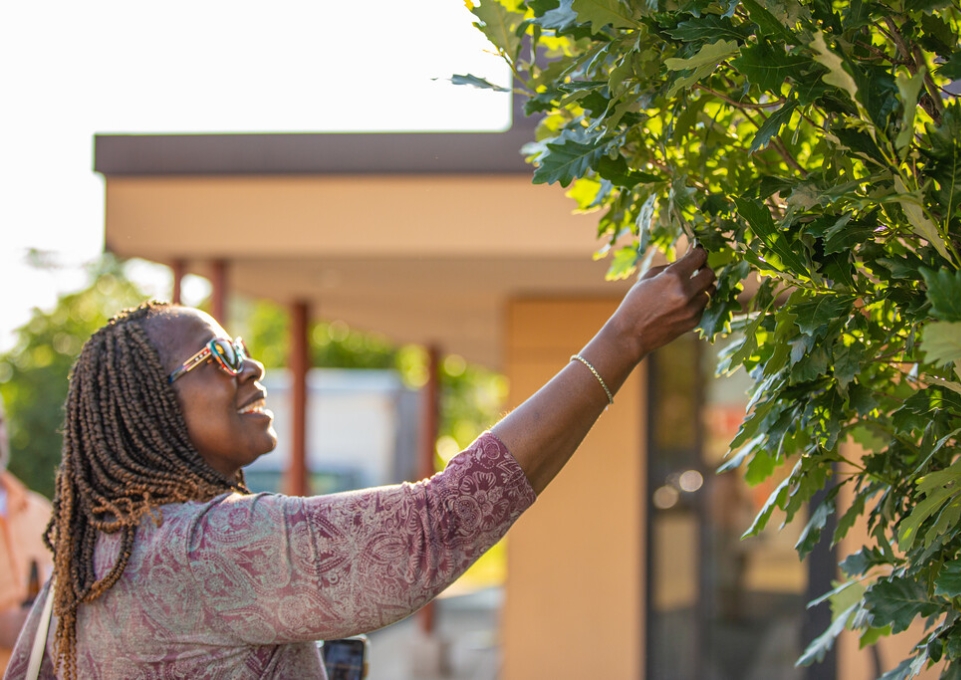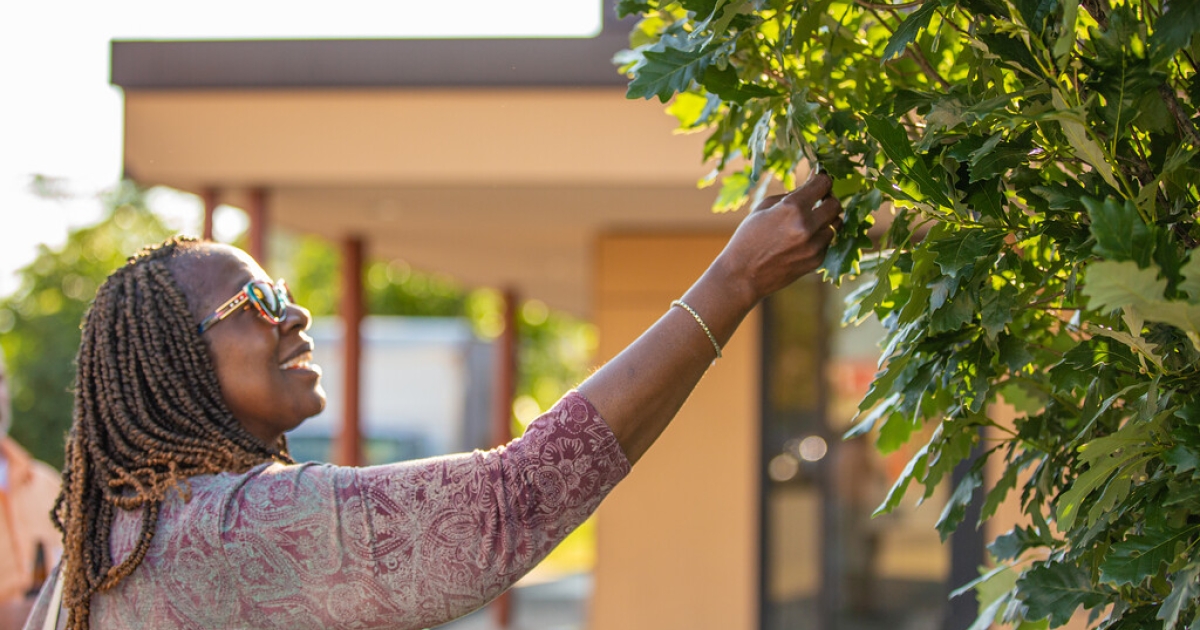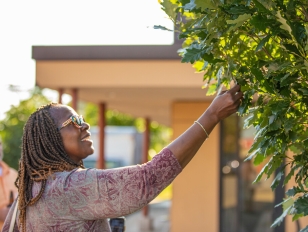
Earth Day and Arbor Day fall within just five days of each other this year, which makes it the perfect time to learn more about Buffalo State University’s Maud Gordon Holmes Arboretum, a campus gem that offers ecological benefits, educational enhancement, and natural beauty all year long.
An arboretum is a place where trees, shrubs, and herbaceous plants are cultivated for scientific and educational purposes. The Maud Gordon Holmes Arboretum at Buffalo State University was formally dedicated in 1962 in honor of Maud Gordon Holmes, founder of the Garden Center Institute of Buffalo. What began as a collection of 300 trees has now grown to more than 1,400—99 percent of which were intentionally planted—plus more than 100 varieties and cultivars of native and nonnative species and numerous shrub and ornamental plantings.
“We don’t have a set-aside 30 acres of land,” said Steven Sypniewski, assistant campus planner, arboretum manager, and campus arborist. “Buffalo State’s arboretum is actually the grounds of the campus.”
Here are five ways to engage with this ecological treasure:
Attend an Earth Day or Arbor Day Event
Earth Day is Monday, April 22, with Arbor Day not far behind on Friday, April 26. Buffalo State will host multiple events sponsored by the Buffalo State Campus Planning Office, Sustainability Committee, and Friends of the Maud Gordon Holmes Arboretum that will provide opportunities to learn about and connect with the natural world.
Buffalo State’s Earth Day and Arbor Day Sustainability Fair, an annual event since 2018, will be held Thursday, April 18, from noon to 2:00 p.m. in the Campbell Student Union. Attendees will learn about green initiatives taking place on campus and in the community.
Arbor Day begins with a Campus Bird-Watching Walk and Talk at 7:30 a.m., departing from Bacon Hall 204, and continues with a ceremonial tree planting from 11:00 to 11:45 a.m. on the east side of Bishop Hall. From 3:00 to 4:15 p.m., Buffalo State biology professor Robert J. Warren II will present “The Relationship of the Common Honey Locust and the Native American Community before European Settlement” in Technology Building 160.
Visit the Maud Gordon Holmes Arboretum website to learn more about these events.
Join the Friends of the Arboretum
In 2002, the emerald ash tree borer, an insect native to China, was inadvertently imported to the United States. The wood-boring beetle started in Michigan and worked its way through Ohio, Indiana, Southern Ontario, and Western New York, destroying ash trees as it went. More than a billion trees were lost across the country over 10 years. Buffalo State University’s arboretum lost more than 200 trees to the ash borer.
This loss spurred the formation of the volunteer group Friends of the Maud Gordon Holmes Arboretum. While the Friends’ original goal was to replenish Buffalo State’s ash trees, the group has continued as a philanthropic endeavor that hosts annual tree plantings and sponsors Arbor Day and other events. The Friends aim to plant 20–30 trees yearly.
Anyone—faculty, staff, students, alumni, friends of Buffalo State—may join for a membership fee of $20.
Learn about the Tree Campus Higher Education Designation
For the past two years, Buffalo State University has been recognized by the Arbor Day Foundation as a Tree Campus Higher Education Campus. This designation celebrates Buffalo State’s commitment to maintaining its trees and general sustainability practices. Buffalo State’s guideline for tree installation and care was developed by Sypniewski following standards set by the International Society of Arboriculture (ISA), the New York State Nursery and Landscape Association (NYSLNA), the Arbor Day Foundation, and Western New York best practices.
Plans are underway to continue this recognition for 2024 and beyond.
“Just to get a little touch of nature in the heart of the city is important.”
Take Your Learning Outdoors
The arboretum has been designated as an outdoor classroom and has helped bring thousands of students closer to nature.
“I have seen professors using the outdoors, literally walking up to the trees, using them in the lesson plan,” Sypniewski said. “I’ve seen art students, too, with their easels, painting the trees. It’s been used in multiple departments across campus.”
Even if a lesson plan doesn’t directly relate to the arboretum, conducting a class or studying independently outdoors can offer psychological and mental health benefits such as improved focus and mood, enhanced memory, and reduced stress.
Slow Down and Connect with Nature
Perhaps the simplest way to engage with the arboretum is to spend time appreciating it.
“We walk by trees every day, but many people don’t even pause to take a look at them,” said Sypniewski. “Get back to nature.”
Sypniewski also recommends scanning the QR code on the arboretum’s website, which leads to a virtual map of the campus’s trees, originally developed by Mary Perrelli, Buffalo State geographic information systems lab supervisor, and students during the 2012–2013 academic year. The map, which is consistently updated, provides tree names, dedications, and other details.
Even when people are not actively learning about the trees, Sypniewski said, being around them and taking in the natural beauty is beneficial.
“Just to get a little touch of nature in the heart of the city is important,” he said. “Know that this arboretum is here and appreciate the trees around you.”
Photos by Jesse Steffan-Colucci, Buffalo State photographer.



